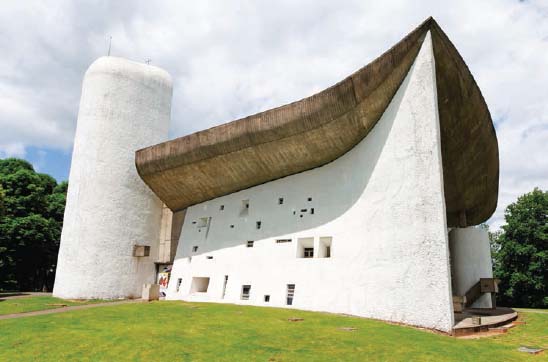The Modern World During and After the World Wars, C. 1914–1960Architecture and Design |
Who was Le Corbusier? |
Le Corbusier (1887–1965) was an architect and designer whose real name was Charles-Edouard Jeanneret. He was also a painter and writer, publishing Towards a New Architecture in 1923. Le Corbusier’s approach to architecture can be explained in his statement that a house is a “machine for living” (quoted in Arnason 561). He is known for early home designs and later urban renewal projects. One of his earliest and most famous home designs is the Villa Savoye, built between 1928 and 1930 in Poissy, France. The rectangular plan of the house allows for long, expansive windows that help to bring the outside in. Raised on pillars, the Villa Savoye is an early attempt to design a domestic space around the use of an automobile, which could be driven and parked under the house. For his urban projects, Le Corbusier believed that architecture could serve as a solution to poverty. He envisioned a total city, in which uniform architectural design would create an ideal living environment. Between 1947 and 1952, he designed the Unité d’Habitation in Marseilles, France, with concrete as a primary building material. The project included duplex apartments along with shops, restaurants, and roof-top park space—a complete community. Le Corbusier’s work on the Unité d’Habitation inspired an architectural style named Brutalismi.

Le Corbusier designed the Chapel of Notre-Dame-du-Haut in 1955. The religious structure was built using one of Le Corbusier’s preferred materials: concrete.
